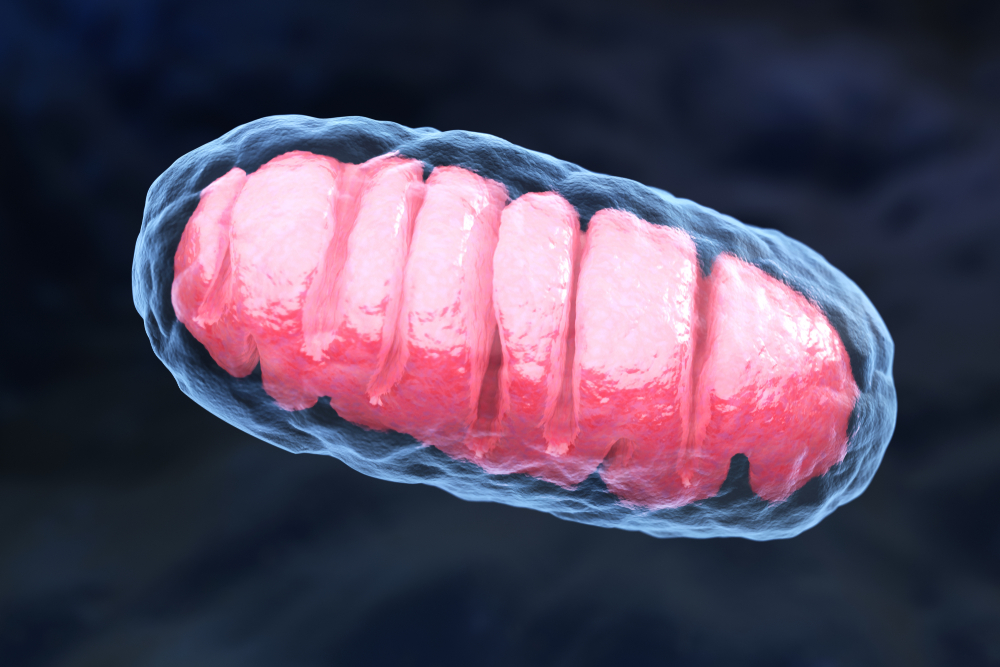Excess Alpha-synuclein Directly Linked to Mitochondrial Problems

Tatiana Shepeleva/Shutterstock
Higher-than-normal levels of alpha-synuclein — the protein that accumulates in toxic clumps in Parkinson’s disease — affect the shape, dynamics, and health of mitochondria, which are the powerhouses of the body’s cells, according to a study in a fruit fly model.
“When fruit fly larvae expressed alpha-synuclein at elevated levels similar to what is seen in Parkinson’s disease, many of the mitochondria we observed became unhealthy, and many became fragmented,” Shermali Gunawardena, PhD, the study’s senior author and an associate professor of biological sciences at University at Buffalo, said in a university press release.
“Through detailed experiments, we also showed that different parts of the alpha-synuclein protein seem to be responsible for these two problems,” Gunawardena said.
Notably, a specific region of the protein was found to directly interact with PINK1, a mitochondrial protein whose deficiency has been linked to early onset Parkinson’s, which is believed to be caused by a combination of genes and other factors.
In the lab, fruit fly larvae were genetically engineered to produce excess amounts of the alpha-synuclein protein.
“Through this approach, we pieced together a new understanding for how the Parkinson’s disease-related protein alpha-synuclein disrupts the health and movement of mitochondria — the epicenter for energy production in cells,” said Thomas J. “TJ” Krzystek, the study’s co-first author and a PhD candidate at Gunawardena’s lab.
“We believe this work emphasizes a promising path that can be explored for potential therapeutics aimed at improving mitochondrial health in Parkinson’s disease patients,” Krzystek added.
The study, “Differential mitochondrial roles for α-synuclein in DRP1-dependent fission and PINK1/Parkin-mediated oxidation,” was published in the journal Cell Death & Disease.
Parkinson’s disease is associated with the overproduction of alpha-synuclein, a protein abundant in the brain and thought to help regulate nerve cell function and communication. When this protein builds up, it gives rise to toxic clumps that are considered the main trigger of Parkinson’s-associated nerve cell loss.
In addition, “mitochondrial impairments have long been linked to the [development] of Parkinson’s disease,” said Rupkatha Banerjee, PhD, the study’s co-first author, who completed her PhD at Gunawardena’s lab.
PINK1 and PRKN are two genes that code for mitochondrial-associated proteins that play key roles in mitochondria recycling — a process known as mitophagy. Mutations in these two genes are associated with early onset Parkinson’s, or when the disease begins before age 50.
While previous animal studies showed that alpha-synuclein overproduction is associated with mitochondrial dysfunction and that this protein can accumulate in cells’ energy factories, how alpha-synuclein “influences mitochondrial dynamics and turnover is unclear,” the researchers wrote.
Now, using the fruit fly (Drosophila melanogaster) as a disease model of alpha-synuclein-mediated Parkinson’s, Gunawardena and her team provided mechanistic details on how excess alpha-synuclein directly affects mitochondrial health.
Nerve fibers of the fly larvae — genetically modified to produce excess levels of human alpha-synuclein — showed increased mitochondrial fragmentation and damage, as well as greater mitochondrial transport, suggestive of them being marked for mitophagy.
Notably, while alpha-synuclein was located at mitochondria, their fragmentation was found to be independent of alpha-synuclein aggregation, suggesting that the protein’s excess levels may be sufficient to affect mitochondria.
In addition, by eliminating certain parts of the alpha-synuclein protein, the team found that distinct regions were responsible for different damaging processes.
The data suggested that the protein’s so-called N-terminus region plays a role in mitochondrial fragmentation, while its C-terminus region was found to be necessary for mitochondrial damage and movement towards mitophagy.
Further analysis revealed that alpha-synuclein-induced mitochondria fragmentation was dependent on DRP1, a mitochondrial shaping protein. In turn, mitochondrial damage was dependent on Parkin (the protein coded by PRKN) and PINK1 — which was found to directly interact with alpha-synuclein through its C-terminus.
“Our study unravels the intricate molecular mechanisms by which the different regions of alpha-synuclein exert distinct effects on mitochondrial health, bringing into light a potential pathway that could be targeted for exploring new therapeutic interventions in Parkinson’s disease,” Banerjee said.
Gunawardena added that these findings were possible through the use of “imaging tools and a color-tagged marking system” that allowed them “to observe the health, size and the movement behaviors of mitochondria at the same time in living neurons in a whole organism.”
“This research showcases the advantage of using fruit fly larvae as a model organism to study how neurons become damaged during devastating diseases such as Parkinson’s disease,” Krzystek said.
Future studies are needed to confirm these findings and clarify the interactions between different parts of alpha-synuclein and mitochondrial-related proteins, the team said.








